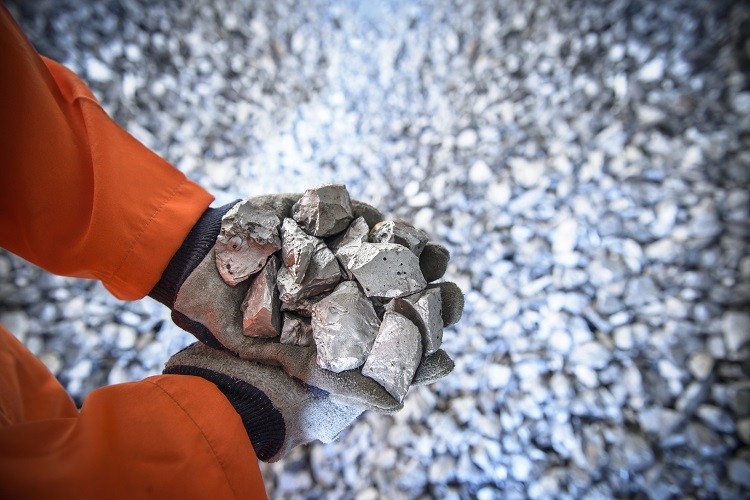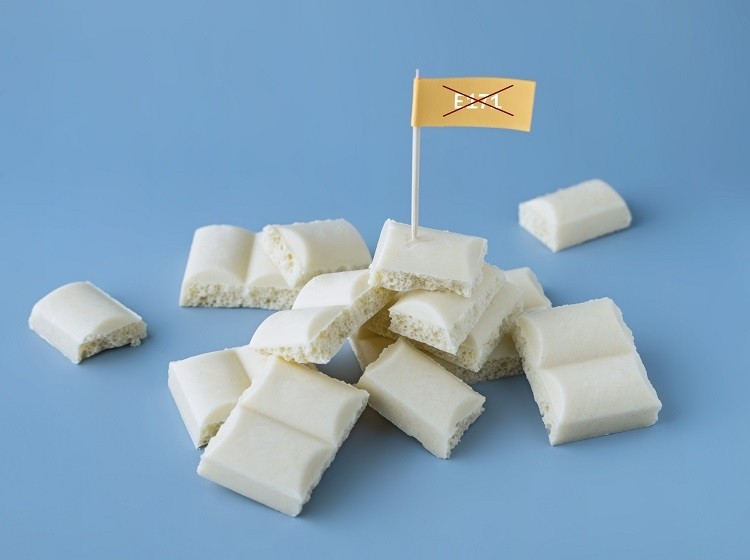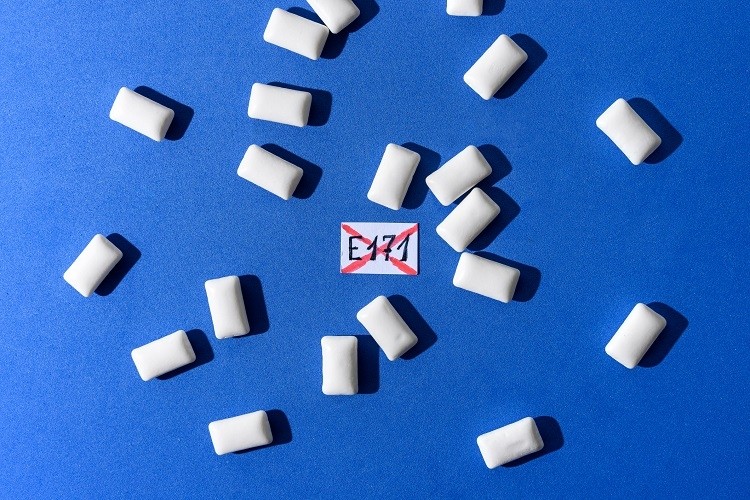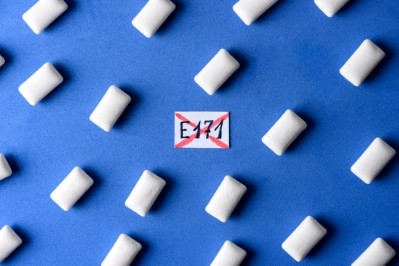Titanium dioxide substitute inspired by ‘brilliantly white’ beetle: ‘The pigment is 100% cellulose, nothing else’

Controversial colouring titanium dioxide (E171) has long attracted attention for its link to negative health consequences, including the development of cancer.
The contentious ingredient – currently used as a colorant in products such as chewing gum, pastries, coffee creamer, food supplements, soups and sauces – is also harmful to the planet.
In just over two weeks, on 7 August, titanium dioxide will no longer be authorised as a food additive in the EU. Food makers are scrambling to find white pigment alternatives, and Cambridge University spin-out believes it has found the solution.
Impossible Materials is developing a sustainable, white pigment made entirely from cellulose.
Bioinspired ‘brilliant’ white pigment
The inspiration for Impossible Materials’ technology comes from nature: a genus of beetles known as Cyphochilus, which is native to Southeast Asia.
The Cyphochilus beetle’s head, body, and legs are covered in tiny elliptical scales, which cover the whole exoskeleton. These scales are an unusually bright white.
In order for something to appear white, the light of all visible wavelengths must be scattered. The key to creating a white material is creating a rough, porous structure that light can ‘bounce around in’, the start-up explained.
The Cyphochilus beetle’s exoskeleton contains just that: an ‘extraordinary’ network-like system which Impossible Materials recognises as ‘one of the best’ light scatterers found in nature.
Using the beetle scales as ‘bioinspiration’, the Impossible Materials team sought to find a similar fibrous structure to create white colour, which they identified in cellulose. “Its inherent rod-like structure mimics the light-scattering system of the Cyphochilus beetle,” explained the start-up.
As CEO Lukas Schertel explained, creating ‘whiteness’ is not very difficult. “You can always make whiteness by using a lot of ‘scattering elements’, we call it. When there are a lot of particles, the light that comes in gets kind of randomised, and it creates the white appearance.
“If you add more of this material, or make your coating very thick, you will always achieve a white appearance.”
The real challenge for industry is to create whiteness with very little material on very thin scale.
Impossible Materials is translating the structure within the beetle’s exoskeleton using a more sustainable material: cellulose “Combining our know-how of how to optimise the optical particles and how to optimise the use of the sustainable material was the origin of the technology.”
The start-up claims to be making ‘safer’ and more renewable structural pigments that can be used in food colouring, packaging, automobile paint, paper, as well as cosmetics and personal care items such as toothpaste.
“Now, the product…is much closer to what industry is used to because there is not only the whiteness aspect, but also mechanical stability, mixing stability, and temperature resistance.
“But it is still 100% cellulose. Nothing else.”
E171 deadline approaches
The ‘biggest’ driver behind Impossible Materials’ ambition to replace titanium dioxide in the market comes from regulatory pressures, explained Schertel.
Titanium dioxide, or TiO2, is classified by the UN’s International Agency for Research on Cancer (IARC) as a possible human carcinogen. In October 2020, the European Food Safety Authority (EFSA) ruled that TiO2 is no longer considered safe when used as a food additive.
France had already banned its use from 1 January 2020, after previous research suggested it may cause cancer. The 2017 study, published in Nature, found that precancerous growths in lab rats increased by 40% after the molecule had been added to their drinking water for 100 days.
In the EU, the regulation outlawing the use of TiO2, as a food additive came into force 7 February and included a six-month grace period to allow food firms time to phase out the use of the additive and find an alternative.

That six-month grace period is now coming to a close, and yet Schertel is not convinced manufacturers have found the perfect alternative. They’re dissatisfied with the ‘whiteness’ of current TiO2 alternatives on the market in terms of performance, the CEO told FoodNavigator.
And removing TiO2 completely without a replacement is not an option. “Customer acceptance of a product is lower without it, because [with TiO2] it has a ‘visual quality’ kind of appearance.
“Therefore, manufacturers are actively looking for something to replace it. I don’t think any of the alternatives on the market are as innovative or sustainable as our material.”
“We come with the sustainable aspect, we come without competition in terms of performance. I think there’s a very high chance we will be successful in the food market.”
A sustainable alternative to TiO2
With around 10m tonnes produced per year, TiO2 is the market leader of the $16bn white pigment industry. It is used in nearly two-thirds of all pigments.
Aside from its well-publicised health concerns, TiO2 is also an ‘environmentally questionable’ material, explained Schertel. The compound is created when titanium – found in minerals in the earth’s crust – reacts with the oxygen in the air.
Titanium is mined in Australia, Sierra Leone, South Africa, Russia and Japan, and TiO2 production is associated with ‘big’ CO2 emissions, we were told. The Titanium Dioxide Manufacturers Association estimates the carbon footprint of the pigment, based on 2012 data, is 5.3tCO2e/ TiO2 product.
Impossible Materials, on the other hand, is working with the widely available natural material cellulose, which can be sourced from biowaste, such as wood pulp or agricultural waste.
“Cellulose is much more sustainable because it can degrade, which is not the case for any of the heavy metal-base pigments. And it can be regrown.”

Conceding that it is too early in the piece to calculate exactly how much CO2e could be removed by swapping out TiO2 for Impossible Materials’ alternative, the CEO said early-stage predictions suggest a potential 90% CO2 saving, “which is a lot”.
Next steps: Scale, tie-ups, commercialisation
The biggest challenge for Impossible Materials lies in scaling its ingredient for the commercial environment. The start-up is currently raising funds to help progress its product into the next scaling stage, and then ultimately, towards commercialisation.
Impossible Materials is currently working with customers on proof of concepts.
Concerning its go-to-market strategy, the start-up is investigating supplying to both ingredients companies and manufacturers. To begin with, Impossible Materials will target niche, high-value applications, such as those found in food, pharmaceutical and cosmetic sectors.

In terms of regulation, Schertel stressed the pigment is not nano sized. “Our product is not a nano-cellulose…I think that makes it very interesting, because the nano aspect was the main concern around titanium dioxide – not the material itself but its nano size.”
Indeed, TiO2 was found by EFSA to contain (at most) 50% of particles in the nano range (i.e. Less than 100 nanometres) to which consumers may be exposed.
When EFSA deemed the additive to be unsafe for human consumption, Prof Maged Younes, chair of EFSA’s Panel on Food Additives and Flavourings (FAF), said: “A critical element in reaching this conclusion is that we could not exclude genotoxicity concerns after consumption of titanium dioxide particles. After oral ingestion, the absorption of titanium dioxide particles is low, however they can accumulate in the body.”
Schertel explained Impossible Materials’ technology is ‘much closer’ to what is known as microcrystalline cellulose and expects it will be labelled as such on-pack.
Cellulosic materials of this kind in the US, for example, are generally recognised as safe (GRAS).
“Our job, as an ingredients supplier, is to produce consistent quality with all properties characterised, and then this goes into the formulation. The formulation then needs to be approved by the food manufacturers,” he continued.
“But we don’t see any hurdles there, because we are in this micro range and not in the nano range.”
Impossible Materials expects to be working through ‘implementation stages’ with customers for the next 12 to 18 months, and plans to achieve large-scale production within the next two to three years.

























